Uses of the Hylotelephium Telephium succulent
If you're a fan of succulents, chances are you've heard of Hylotelephium Telephium, also known as Sedum Autumn Joy or Orpine. This plant is popular for its hardiness, easy care, and striking appearance. But beyond its aesthetic value, what is Hylotelephium Telephium used for? In this article, we'll explore the various benefits and uses of this versatile succulent.
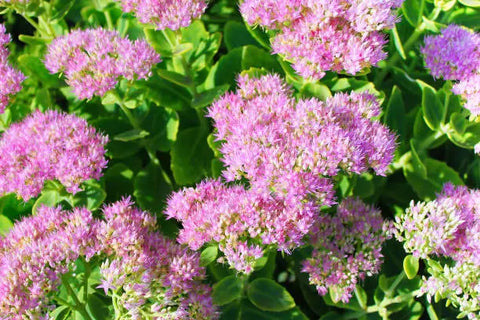
What is Hylotelephium Telephium used for? A Comprehensive Guide
1. What is Hylotelephium Telephium?
2. Is Hylotelephium Telephium Edible?
3. What is Hylotelephium Telephium used for?
3.1 The Culinary Uses
3.2 The Medicinal Uses
3.3 The Decorative Uses
4. How To Use Hylotelephium Telephium Safe?
5. Conclusion
1. What is Hylotelephium Telephium?
Hylotelephium Telephium, also known as Sedum telephium or Purple Sedum, is a succulent plant species in the Crassulaceae family. It is native to Europe and Asia but has been naturalized in other parts of the world, including North America.
It has thick, fleshy leaves that are typically green or gray-green and may have a red or purple tint in some varieties. The plant blooms in the summer and early fall, producing clusters of small star-shaped flowers in shades of pink, red, or white.
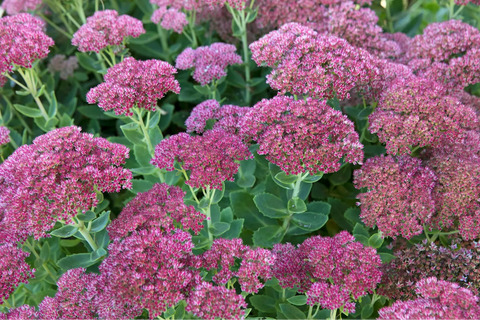
Hylotelephium Telephium is a popular plant for ornamental and landscaping purposes due to its attractive appearance and low maintenance requirements. Some varieties are also used for culinary and medicinal purposes. You can find about “How do you grow purple sedum?” here.
2. Is Hylotelephium Telephium Edible?
Hylotelephium telephium, commonly known as orpine or Sedum Autumn Joy, is not considered edible. While some species of Sedum are edible, Hylotelephium telephium is not recommended for consumption as it contains mildly toxic compounds that can cause gastrointestinal distress if ingested in large quantities.
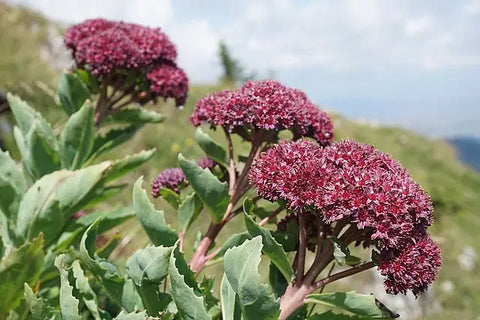
It is important to remember that not all plants are safe to eat, and it is essential to properly identify a plant and its potential toxicity before consuming it. In the case of this plant, it is best to avoid eating it and instead enjoy its ornamental beauty in a garden or landscape setting.
3. What is Hylotelephium Telephium used for?
Hylotelephium Telephium is a versatile and interesting plant species that can be enjoyed in many different ways.
3.1 The Culinary Uses
Hylotelephium Telephium, commonly known as sedum or stonecrop, has some culinary uses, particularly in its young leaves and flowers. Here are some of the culinary uses of it:
- Salad: The young leaves of sedum have a slightly tangy and peppery taste and can be used raw in salads or as a garnish.
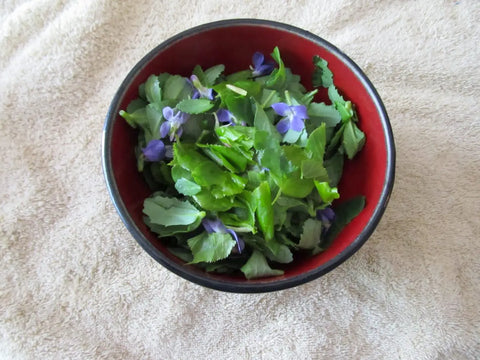
- Soup: The leaves can also be added to soups for a unique flavor and texture.

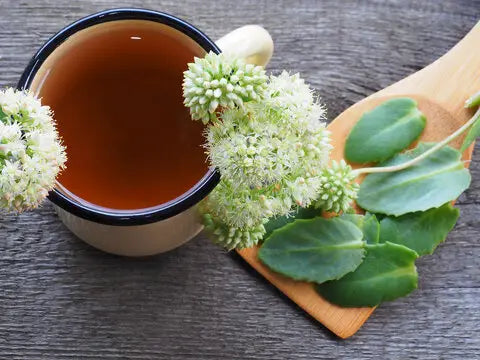
- Pesto: Sedum leaves can be used to make pesto, which can be used as a spread on bread or as a pasta sauce.

It is important to note that while sedum is generally safe for consumption and has culinary uses, it is always best to consume it in moderation and consult with a healthcare professional before using it for culinary purposes. Additionally, some varieties of sedum can be toxic to pets, so be sure to check the specific type of sedum you have before planting it in an area accessible to animals.
3.2 The Medicinal Uses
Hylotelephium Telephium, also known as sedum or stonecrop, has been used for centuries in traditional medicine to treat various ailments. Here are some of the medicinal uses of it:
- Wound healing: Tannins, which are found in sedum and have astringent characteristics aid in wound healing. It can hasten the healing of minor burns, scratches, and wounds when used topically.[1]
- Digestive issues: Constipation, diarrhea, and stomach ulcers are among the digestive problems that sedum has traditionally been used to treat. The plant's high fiber content and astringent qualities may be able to relieve stomach discomfort.[2]
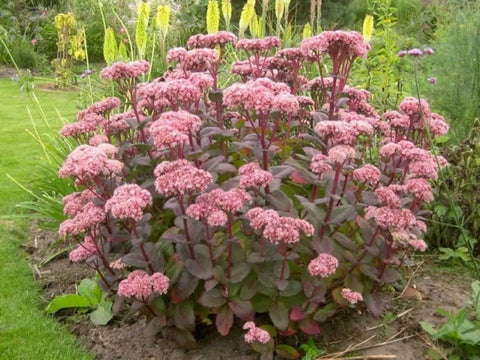
- Inflammation: Sedum contains compounds such as flavonoids, which have anti-inflammatory properties that can help reduce inflammation in the body. It can be used to treat conditions such as arthritis, gout, and rheumatism.
- Headaches: Traditional use of sedum as a natural headache and migraine treatment exists. It can aid in reducing pain and swelling brought on by headaches thanks to its analgesic and anti-inflammatory qualities.
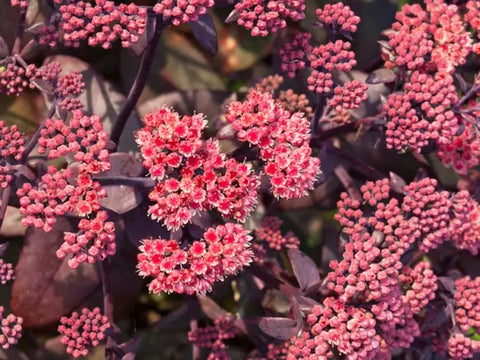
3.3 The Decorative Uses
Hylotelephium Telephium, commonly known as sedum or stonecrop, is a popular plant for decorative purposes due to its unique appearance and low maintenance requirements. Here are some of its decorative uses of it:
Landscaping: Sedum is a popular plant for landscaping and can be grown in rock gardens, on walls, or as ground cover. Its ability to thrive in various conditions and its tolerance for drought make it an ideal plant for low-maintenance landscaping.
Containers: Another excellent plant for container gardens is sedum. It is a versatile alternative for a variety of container sizes and locales because of its succulent leaves and blossoms, which give texture and interest to any container garden.
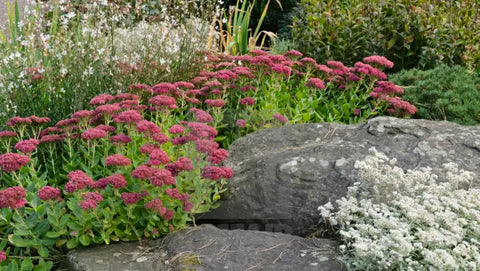
Floral arrangements: To add texture, color, and interest to floral arrangements, utilize the succulent leaves and petals of Sedum. It is a well-liked option for cut flower bouquets because of its long-lasting blossoms.
Centerpieces: Sedum can be used as a centerpiece for a table, adding a natural touch to any decor. Its unique appearance and low maintenance requirements make it an ideal choice for dinner parties and events.
Indoor plant: Some varieties of sedum can be grown indoors, making it a great decorative plant for any room in the house. Its ability to tolerate low light and dry conditions makes it an ideal choice for those who want a low-maintenance indoor plant.
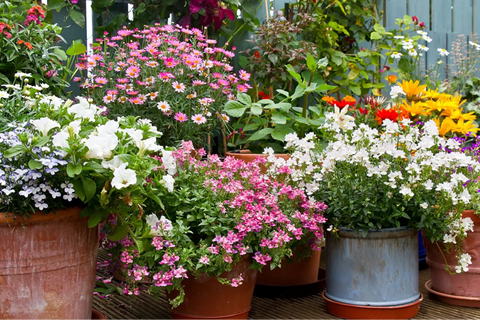
4. How To Use Hylotelephium Telephium Safely?
When using Hylotelephium Telephium, commonly known as sedum or stonecrop, it is important to use it safely and responsibly. Here are some tips to ensure safe use:
Consult with a healthcare professional: Before using sedum for medicinal purposes, it is important to consult with a healthcare professional to ensure that it is safe for you to use and will not interact with any medications you may be taking.
Moderation: When using sedum for culinary or medicinal purposes, it is important to use it in moderation. Excessive consumption of sedum can lead to gastrointestinal distress, and in some cases, sedum can be toxic.

Identify the variety: Different varieties of sedum have different levels of toxicity, so it is important to identify the specific type of sedum you have before planting it in an area accessible to pets or consuming it.
Avoid high-traffic areas: When using sedum for decorative purposes, it is important to avoid planting it in high-traffic areas, as the plant can be easily damaged or trampled.
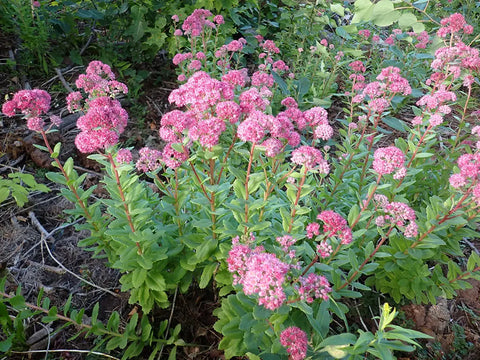
Safe handling: When handling sedum, it is important to wear gloves, as some varieties can cause skin irritation. Additionally, some varieties of sedum can be toxic to pets, so be sure to keep the plant out of reach of animals.
By following these tips, you can ensure the safe and responsible use of Hylotelephium Telephium.
5. Conclusion
In conclusion, Hylotelephium Telephium is a versatile and attractive plant that can serve many purposes in your garden. So if you're wondering "What is Hylotelephium Telephium used for?", the answer is simple: it's a plant that can bring beauty, biodiversity, and functionality to your outdoor space. Don't forget to visit The Rike for a wide selection of seeds, and start growing your own beautiful and useful plants today! With their high-quality seeds and excellent customer service, The Rike is the perfect choice for any home gardener.





Leave a comment